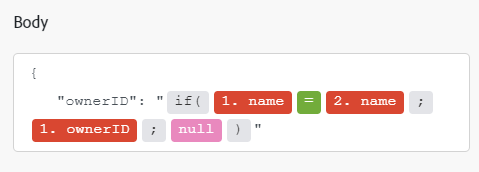Adobe Target Modules
In an Adobe Workfront Fusion scenario, you can automate workflows that use Adobe Target, as well as connect it to multiple third-party applications and services. Adobe Target modules allow you to create, read, update, or delete records,list all records of a given type, search records based on criteria you specify, or perform a custom API call to the Adobe Target API.
If you need instructions on creating a scenario, see the articles under Create a scenario: article index.
For information about modules, see the articles under Modules: article index.
Access requirements
| table 0-row-2 1-row-2 2-row-2 3-row-2 layout-auto html-authored no-header | |
|---|---|
| Adobe Workfront package |
Any Adobe Workfront Workflow package and any Adobe Workfront Automation and Integration package Workfront Ultimate Workfront Prime and Select packages, with an additional purchase of Workfront Fusion. |
| Adobe Workfront licenses |
Standard Work or higher |
| Adobe Workfront Fusion license |
Operation-based: No Workfront Fusion license requirement Connector-based (legacy): Workfront Fusion for Work Automation and Integration |
| Product | If your organization has a Select or Prime Workfront package that does not include Workfront Automation and Integration, your organization must purchase Adobe Workfront Fusion. |
For more detail about the information in this table, see Access requirements in documentation.
For information on Adobe Workfront Fusion licenses, see Adobe Workfront Fusion licenses.
Prerequisites
Before you can use the Adobe Target connector, you must ensure that the following prerequisites are met:
- You must have an active Adobe Target account.
Adobe Target API information
The Adobe Target connector uses the following:
Create a connection to Adobe Target
- Existing Service Account connections will continue to work until January 2025. You must replace your Service Account connections with Adobe Target Server-to-server connections by January 2024.
- You must be a developer for your organization to create an Adobe Target Server-to-server connection. The developer role is set in the Adobe Admin Console.
To create a connection for your Adobe Target modules:
-
In any module, click Add next to the Connection box.
-
Fill in the following fields:
table 0-row-2 1-row-2 2-row-2 3-row-2 4-row-2 5-row-2 6-row-2 7-row-2 8-row-2 9-row-2 10-row-2 layout-auto html-authored no-header Connection name Enter a name for this connection. Connection type Select whether you are creating a Service Account connection or an Adobe Target Server-to-server connection.
IMPORTANT: Connections created after June 3, 2024 require an Adobe Target Server-to-server connection. Existing Service Account connections will continue to work until January 2025. You must replace your Service Account connections with Adobe Target Server-to-server connections by January 2024.
Environment Select whether you are connecting to a production or non-production environment. Type Select whether you are connecting to a service account or a personal account. Client ID Enter your Adobe Client ID. This can be found in the Credentials details section of the Adobe Developer Console. Client Secret Enter your Adobe Client Secret. This can be found in the Credentials details section of the Adobe Developer Console. Technical account ID Enter your Adobe Technical account ID. This can be found in the Credentials details section of the Adobe Developer Console. Organization ID Enter your Adobe Organization ID. This can be found in the Credentials details section of the Adobe Developer Console. Tenant To locate your Tenant, log in to the Adobe Experience Cloud, open Target, and click the Target card. Use the Tenant ID value as noted in the URL subdomain.
For example, if your URL when logged in to Adobe Target is
<https://mycompany.experiencecloud.adobe.com/...>then your Tenant ID is "mycompany."Meta Scopes Enter ent_marketing_sdkPrivate key Enter the private key that was generated when your credentials were created in the Adobe Developer Console.
To extract your private key or certificate:
-
Click Extract.
-
Select the type of file you are extracting.
-
Select the file that contains the private key or certificate.
-
Enter the password for the file.
-
Click Save to extract the file and return to the connection setup.
-
-
Click Continue to save the connection and return to the module.
Adobe Target modules and their fields
When you configure Adobe Target modules, Workfront Fusion displays the fields listed below. Along with these, additional Adobe Target fields might display, depending on factors such as your access level in the app or service. A bolded title in a module indicates a required field.
If you see the map button above a field or function, you can use it to set variables and functions for that field. For more information, see Map information from one module to another.

Actions
Create a record
This action module creates an AB or XT activity, an offer, or an audience.
XT Activity fields
Offer fields
Make a custom API call
This module makes a custom API call to the Adobe Target API.
Delete a record
This action module deletes a single AB activity, XT activity, Offer, or Audience.
Read a record
This action module retrieves data for a single Activity, Offer, Audience, Property, or Report.
Update a record
This action module updates a record in Target.
Searches
Get records
This search module retrieves a list of records of the selected type.
Search
This search module searches for Activities, Offers, or Audiences based on criteria you specify.
